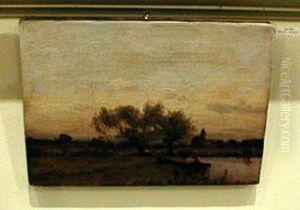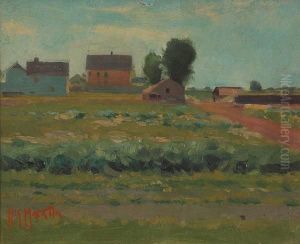Hardesty Gilmore Maratta Paintings
Hardesty Gilmore Maratta was an American artist, color theorist, and inventor born in 1864 in Illinois. He emerged as a significant figure in the late 19th and early 20th centuries, primarily known for his contributions to the understanding and application of color in art. Maratta's work and theories predated and influenced the development of modern color theory, making him a precursor to later artists and theorists who would further explore color's emotional and psychological effects.
Maratta's early life was marked by a profound interest in art and science, a combination that would define his career. He initially trained as a painter, developing a keen interest in the effects of color on composition and viewer perception. His artistic pursuits led him to study the properties of color, delving into both its artistic and scientific aspects. This interdisciplinary approach was innovative for his time and set the stage for his later work in color theory.
In the late 19th century, Maratta moved to California, where he became deeply involved in the Arts and Crafts Movement, an international trend advocating for traditional craftsmanship using simple forms and emphasizing the importance of materials and nature as sources of inspiration. During this period, Maratta's interest in color theory deepened, leading to the development of his most significant contribution to art: the Maratta Color System.
The Maratta Color System was a comprehensive approach to understanding and organizing color. It was based on the idea that colors could be classified into a system that artists could use to create harmony and contrast in their work. Maratta developed a set of colored disks and charts that illustrated his theories, making them accessible to artists and educators. His system emphasized the emotional and psychological effects of color combinations, offering a methodical approach to color selection that was both innovative and influential.
Despite the significance of his work, Maratta's contributions were somewhat overshadowed by the later achievements of more widely recognized color theorists like Johannes Itten and Josef Albers. However, his efforts in the early 20th century laid the groundwork for the modern understanding of color theory. Maratta continued to work, teach, and write about color until his death in 1924. Today, he is remembered as a pioneering figure in the study of color, whose theories and practices contributed to the evolution of modern art and design.


